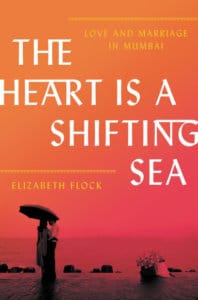Books
Tracing The Complex Lives of Couples in Arranged Marriages in India

Writing in a Chicago magazine in 1917, Basanta Koomar Roy, an American journalist of Indian origin, demystified marriages in the old country for readers in his new homeland. If “a girl gets to be sixteen years of age,” he wrote, “her parents feel humiliated for having a such an ‘old maid’ in the family.” In India in those days, matchmakers introduced potential spouses, and parents made the selection. “The boy and the girl themselves have little or nothing to say in the matter,” Roy explained. The entire business was governed by the laws and customs of Hinduism. For betrothed couples, the wise course was to be stoical and to reconcile themselves to their fate. Men and women, in matters of marriage and other life journeys, typically gave in to “Hindu fatalism.”
Elizabeth Flock landed nine years ago in an India unrecognizably different from the one Roy inhabited. A 22-year-old American, she came to Mumbai in search of a career. Her choice suggests that India had indeed undergone a dramatic transformation in recent decades from a stalwart of socialism into a land of progress and opportunity.
In “The Heart Is a Shifting Sea,” Flock seeks to understand the evolution of Indian marriages. She follows three couples – Veer and Maya, Marwari Hindus; Shahzad and Sabeena, Sunni Muslims; and Ashok and Parvati, Tamil Brahmins – in Mumbai, “India’s most frenetic city.” What unfolds is a book that truly is impossible to put down.
Veer and Maya, Hindus from the Marwari caste, eloped to marry for love. But they were ill-equipped to survive the backlash provoked by their transgression against tradition. Sabeena and Shahzad saw each other only once before being paired off in a marriage arranged by their Sunni Muslim families. No matter. Sabeena grows to care deeply for her infertile husband. Parvati and Ashok are married after Parvati, unsure of her love for a Christian student at her university, ultimately yields to her Brahmin father and finds a fellow Brahmin on a matrimonial website.
On one level, there is nothing unique about these marriages: The couples cope with infidelity and infertility, and struggle to balance the demands of work and home life. What distinguishes them is their backdrop: the ferment of modern India.

And it is here that Flock falters. A book that would have merited wide readership as a narrative of three marriages struggles to capture the nuances of a country in transition. Flock strives to meet the challenge by layering in historical detail. But facts sometimes get the better of her. She notes that the British “abruptly [withdrew] from India after three hundred years,” which adds a full century to British dominion over the subcontinent.
Flock discusses India’s political change largely in terms of Muslim-Hindu antagonism, neglecting the seemingly innocuous attitudes of the majority Hindus that have permeated the country’s nominally secular political space. For instance, Parvati, the youngest of the book’s characters, who briefly dated and considered marrying a Christian in college, morphs by the end into a rigidly orthodox Hindu much like her father. Educated at the most advanced Indian schools of science and living in the most cosmopolitan Indian city, she has decided that she will not allow her children to marry non-Hindus. Parvati’s resistance to the change Flock sees everywhere is emblematic of the resistance of old India to genuine reform.
Superficially, India has changed. People have bigger apartments; they have cars, mobile phones and disposable incomes. Substantively, how different are these marriages from the ones Roy discussed a century ago? None of the six characters has really outgrown his or her inherited identity; all of these men and women, meant to epitomize India’s energetic departure from the past, have married people like themselves, down to their caste and sect. The matchmaker has been supplanted by matrimonial websites, choice remains an illusion, and traditions and customs are still paramount. Men and women continue to fall back on the fatalism of old India.
Flock doesn’t claim to speak for all marriages; yet her book functions as a stealthy argument for the wisdom of arranged marriage, even if not all end in harmony. Veer and Maya’s union, forged in defiance of tradition, culminates in adultery, withdrawal and ennui; Shahzad and Sabeena’s arranged marriage matures into an amicable partnership; Ashok and his atavistic young wife, Parvati, find love.
Flock closes the book in 2015, with Parvati, who is pregnant with her first child in her happy arranged marriage, singing a lullaby to her unborn baby. This sweet scene should not lessen readers’ wariness of arranged marriage, a practice that, for all its outward refinements, remains rooted in the denial of choice and autonomy, especially for women. In the same year of Parvati’s pregnancy, 7,634 Indian women were killed by their husbands or their husbands’ families for not bringing enough dowry, according to the country’s National Crime Records Bureau. An overwhelming majority of those homicides occurred within arranged marriages.
© The Washington Post
